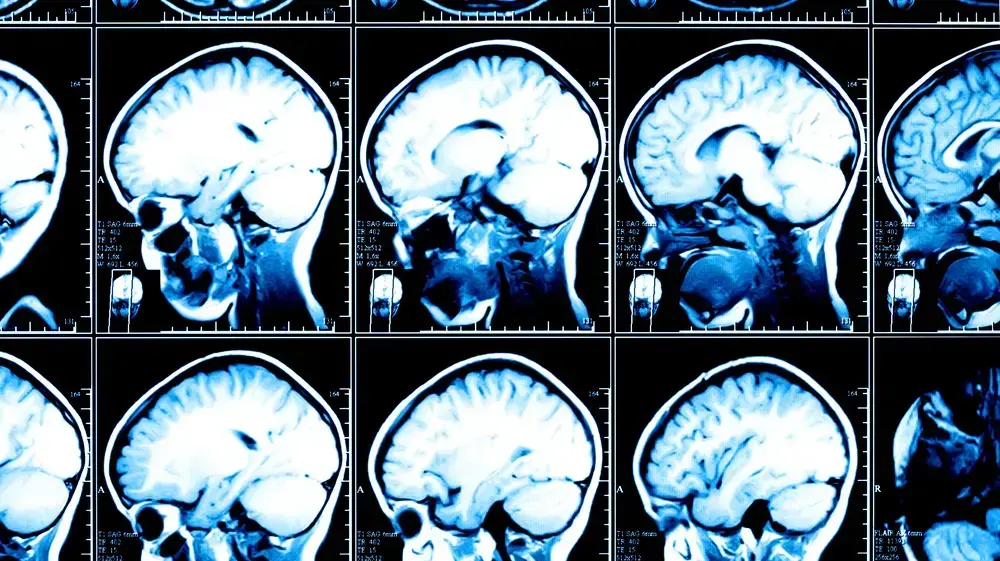- Click to share on Facebook (Opens in a new window)
- Click to share on Twitter (Opens in a new window)
- Click to share on LinkedIn (Opens in a new window)
- Click to email a friend (Opens in a new window)
(CNN) - If you're stressed or want to enjoy virtual happy hour with your friends during pregnancy, having a glass of wine every now and then can seem like a relaxing plan.
But that behavior goes against the results of an investigation published Tuesday in the JAMA Network Open magazine .
The researchers found that any level of alcohol or tobacco use during pregnancy - little or much, and even if you quit soon - influences brain development in newborns.
The long-term negative effects of excessive prenatal exposure to alcohol or tobacco (or both) increase the risk of multiple adverse outcomes, the researchers noted.
Exposure to alcohol during pregnancy is the leading cause of preventable intellectual disabilities, according to the study, and smoking during pregnancy is one of the most modifiable causes of postpartum illness and death.
However, public health has not yet determined a safe level of alcohol or tobacco use during pregnancies, the study explained. So the authors examined the link between prenatal exposure to alcohol and tobacco and brain activity in newborns.
They did not find a safe level that is conclusive, but the findings suggest that drinking or smoking in the early stages and then quitting, or doing it at low, moderate, or high levels, impacts brain development in newborns.
Those women who drank alcohol and quit in the first trimester had had an average of nine drinks during that period. For the purposes of the study, it was defined that a low consumption level was two standard drinks on average during the first quarter.
A moderate or high level of consumption involved, on average, 36 drinks during the first quarter, 16 in the second and eight in the third (the authors did not have enough participants to separate groups of moderate and high consumption, so they combined them).
As for tobacco, smoking an average of 14 cigarettes during each quarter was considered to be a "low" consumption, while smoking between 45 and 50 was classified as "high" consumption. Those women who stopped smoking in early pregnancy smoked an average of seven cigarettes before quitting.
"We can already see that there was an alteration in the development of brain processes that can be quantified during sleep when babies are only a few days old," explained author William P. Fifer, professor of medical psychology at Irving Medical. Center of Columbia University in New York City. "The babies of those mothers who had even a low level of exposure to alcohol or tobacco still had some alterations in brain activity," he explained.
Effects of alcohol and tobacco on brain activity
A total of 1,739 infants enrolled in the Safe Passage Study , a large multidisciplinary study investigating associations between prenatal alcohol exposure, sudden infant deaths, and stillbirths of dead children, participated in the study .
The study also determined the results of prenatal exposures and how they are affected by environmental and lifestyle factors. This research is now done, but the current article is a follow-up on newborns that was included.
The mothers were recruited from 2011 to 2015 in clinics in Cape Town, South Africa, and in the Northern Plains region of the United States. Babies born at less than 37 weeks gestation or over 41 were excluded, as well as mothers who gave birth to more than one newborn. Mothers taking psychiatric medication were also excluded from this study, although they were included in the Safe Passage Study .
Details on alcohol consumption were obtained from a 30-day timeline follow-up interview (technique known as Timeline Followback Interview ), in which women reported their daily alcohol consumption on the last day they drank and 30 days before, up to four times during pregnancy. They also recorded whether they shared the drink with someone else, the type and brand of alcohol, the size of the drink, and how long alcohol consumption lasted in each instance.
Information on tobacco exposure was also collected up to four times during pregnancy. The women reported their consumption habits on the last day they had smoked and the previous 30. They also indicated how often they did it and the number of cigarettes smoked in an average day of consumption.
The researchers performed an electroencephalogram (EEG) in 12 regions of the infants' brains while they slept.
EEGs are noninvasive tests of brain function and activity that reflect electrical activity in the cortex of the brain. They are commonly used to examine and predict the effects of exposures in the womb and associations with brain development at later ages.
EEG spectral power, another measurement used by researchers, measures the range or rate of the brain's EEG signal over a period of time.
Neonates whose mothers stopped drinking before the second trimester, or were in the low-to-high continuous consumption groups, had higher low-frequency EEG power in the left temporal section of their brain compared to infants no prenatal exposure to alcohol.
Babies whose mothers smoked moderately or heavily at any time during pregnancy or had any level of consumption in the first trimester showed reduced activity in the right central area of their brains compared to newborns who were not exposed to tobacco while were in the womb.
Newborns who had had moderate or high continuous exposure to tobacco had a significant decrease in the power of the electroencephalogram in the right central brain area compared to those whose mothers had stopped smoking before the second trimester.
Strong contrasts
Changes in children's brain activity are normal as they grow older, but there is not enough information to conclude whether the increases or decreases in activity recorded in the study happened too early or too late in the development of newborns, Fifer said. . However, the measurements do differ from those for children who had no exposure to alcohol or tobacco.
The highest contrast on EEGs was between children without tobacco and alcohol exposure and those with moderate to high exposure.
"Those who showed the most drastic effects were those (of mothers) who took more or continued to drink more during pregnancy and those who smoked more throughout the pregnancy," Fifer explained.
Previous studies have shown the effects of alcohol and tobacco exposure on specific areas of the brain that are linked to babies' ability to regulate heart rate, respiration, blood pressure and temperature, Fifer said.
"All of these (factors) are extremely important to survive the first few months," he added. "We are finding a reflection of this in our measures of brain activity while babies sleep in the period after birth."
The authors plan to study other exposures and lifestyle factors that could affect long-term neurodevelopmental function.
There will be new studies, but for now research shows that choosing a non-alcoholic cocktail is best at Zoom's reunion and baby shower .
AlcoholPregnancyTobacco





/cloudfront-eu-central-1.images.arcpublishing.com/prisa/GDIPSQV5DRBALCE5I2EXC47C5M.jpg)


